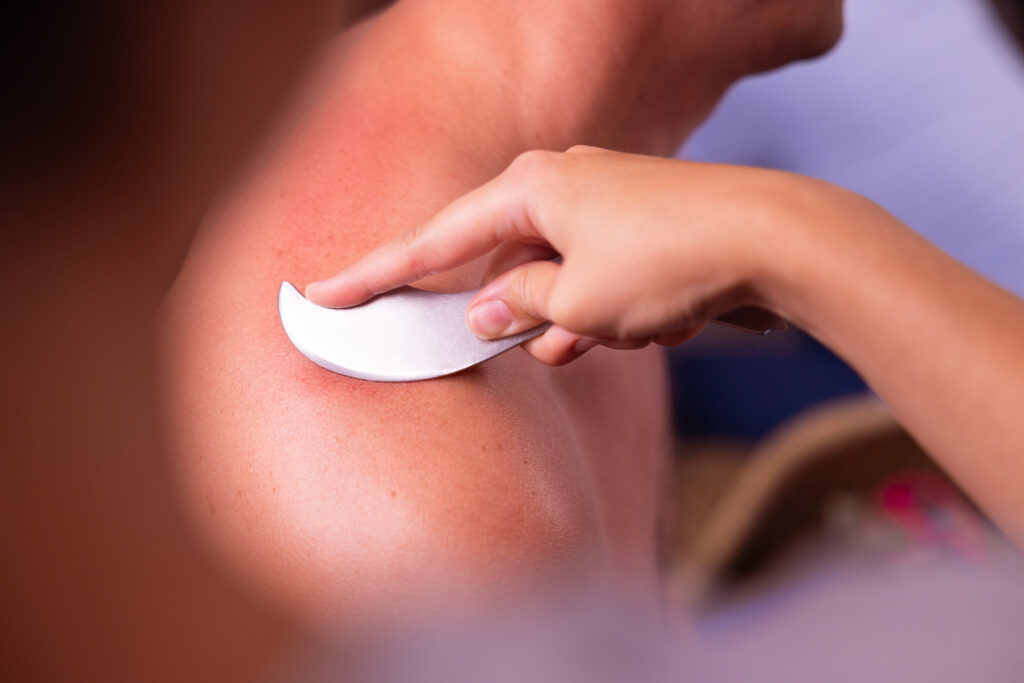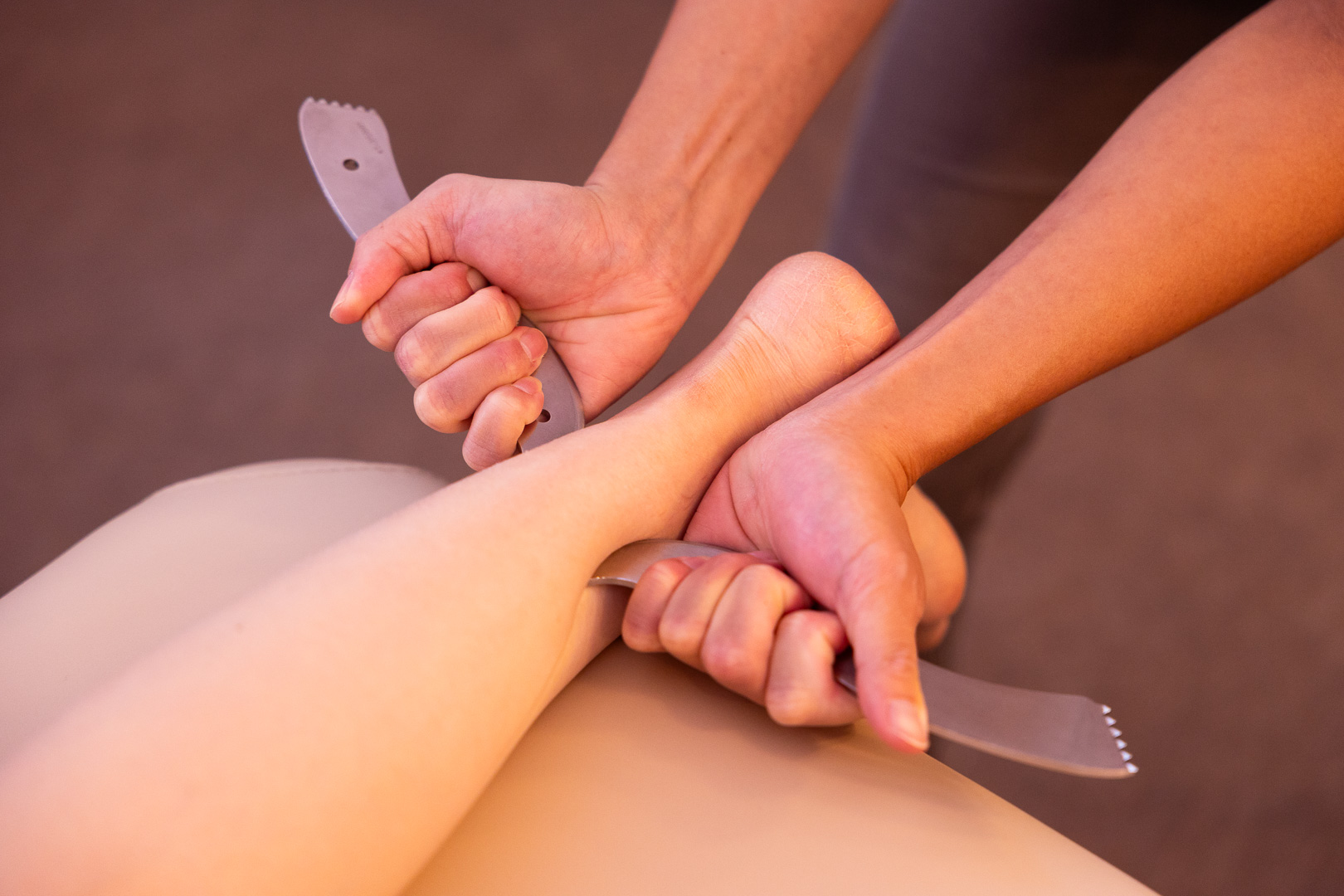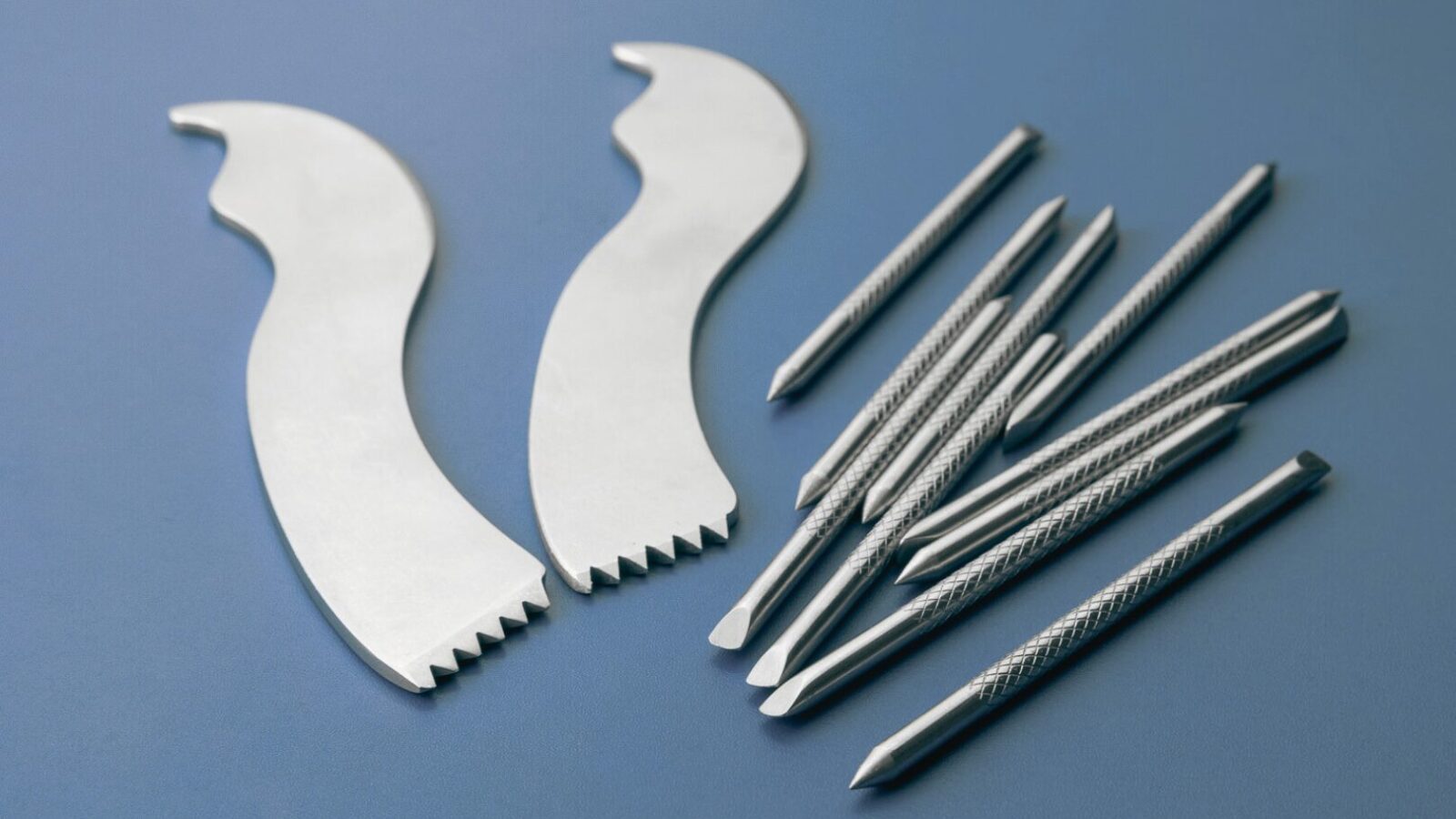Pinotherapy is one of the well-established training programs and at the same time a method of tool-based therapy in the field of physiotherapy education. As with any new perspective on therapy, there are many misunderstandings and misconceptions regarding both the training and the method itself. Let us, therefore, take a closer look at this concept of working with patients.
Pinotherapy – where does the name come from?
The name itself comes from one of the tools used in this method – a pin. You can read about the tools themselves a little further. Hence, all distorted terms, such as pionoterapia – are definitely wrong. It is worth adding, however, that next to the name pinoterapia there is also its synonym – pinopresura. Both refer to the same method and training created by Radosław Składowski. For the sake of clarity in naming, after the creation of the FRSc Academy, which is an educational unit and is subject to the curatorship, the courses and accompanying documentation are currently designated as "pinotherapy". It is under this name that it appears as module 0 in the FRSc.
The concept of FRSc and Pinotherapy
And speaking of which, one of the misconceptions about Pinotherapy is that it is a “toolbox that can be used in a doctor’s office.” The fact is that (as with any method of work), it is possible to use only elements of Pinotherapy in working with a patient. However, using these elements of therapy without the diagnostic indications and contraindications assigned to them in Pinotherapy may result not only in a lack of effectiveness, but also in possible injuries to the patient.
So where does Pinotherapy get diagnostic clues to work safely? From the broader concept it is part of – that is, from FRSc, the concept of the Five Regulatory Systems
In fact, Pinotherapy is module 0 of the full Manual Medicine training – it is therefore the basis of the concept of health and disease of the patient's musculoskeletal system, around which the entire Manual Medicine has developed. And you will find reference to each element taught during the Manual Medicine training within Pinotherapy. What are these concepts and techniques?
Techniques and tools used
It is a common saying that Pinotherapy is "another tool therapy". This is an unfair and misleading statement that has little to do with reality - although, in fact, some therapeutic techniques require the use of tools. These are:

- pins – steel rods with two ends – conical and flat (mainly used in the passive and active CAT and GRAD techniques,
- kata – tools resembling knives, with several zones (used in a wide range of techniques: local/stationary and TASK, RUB+, GRAD, “raking”, etc.).
And although it may seem that the number of techniques indicates the constant use of tools, Pinotherapy also indicates other forms of work (connective tissue massage techniques such as GRASP or vacuum massage with Chinese cupping or selected mobilizations of peripheral joints). Hence, although in Pinotherapy we definitely often have tools in our hands, we strive to improve the patient's well-being with a wide range of techniques, instead of solving everything "with a nail and a knife". All the more so because in Pinotherapy we often indicate where the student can (in the opinion of the instructors) use techniques from already completed training in other concepts, which in Pinotherapy there is simply not enough time to learn.
Miejsce Pinoterapii w nowoczesnej rehabilitacji
It is accepted that various training courses promise a comprehensive approach to various disease entities of the patient after just a three-day course. Is Pinotherapy one of these courses? Yes and no…
Yes – because this course is conceptually so extensive that it is easy to see the possibilities of relief in a very wide range of ailments using these relatively simple techniques. The key to universality lies not in the meticulous learning “by heart” of all the points where it is worth “putting a nail” – but in diagnostics. And using the diagnostic tips provided during the Pinotherapy course, we can see a number of our patients’ ailments in a completely new light – and in the perspective of improving conditions where we have already spread our hands helplessly. And although it may be a leading model of therapy for a number of orthopedic conditions, it will work well as a supplement to therapy with other concepts when we no longer have an idea on how to help our patient.

The range of ailments that pinotherapy can help with
This wide range of approaches to the diagnosis and therapy of the patient's musculoskeletal system allows the use of, if not all of Pinotherapy, then certainly its elements in the rehabilitation of virtually every musculoskeletal disorder (including the rehabilitation of neurological patients in specific cases). Specific recommendations include:
- overload conditions of the musculoskeletal system, including sports injuries (sprains, bruises, etc.).
- Post-operative rehabilitation (e.g. after ACL reconstruction or hip replacement)
- Chronic pain management (e.g. NSLBP, upper cervical pain, headaches, sciatica)
- Support for kinesiotherapy (i.e., preparation of tissues for work, e.g. in stroke patients)
- Acute conditions (e.g. sciatica, carpal tunnel syndrome, etc.)
Summary
Pinotherapy is therefore a versatile method, easy to incorporate into everyday work with the patient, drawing on the broad concept of FRSc. It is a closed whole that allows for comprehensive treatment of the patient's musculoskeletal system, while being easy to adapt to cooperation with other methods of physiotherapy. At the same time, it is a safe method, sensitive to yellow and red flags, striving for precise diagnostics before making therapeutic decisions. Above all, however, it is the first, major step on the path of development in the FRSc concept.

Maciej Graczykowski
I am a physiotherapist and a naturopath-acupuncturist. Contrary to popular belief, these two fields not only do not exclude each other but actually complement one another. My goal is to "demystify" acupuncture and its related therapies to make them accessible for practitioners of Western medicine. Read more...





